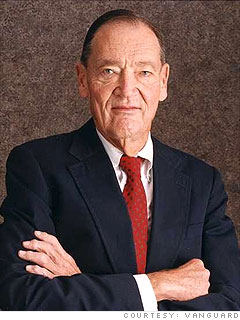How long does it take to generate return?
There is no way to accurately state how long it will take for an investment fund to generate the desired return, as this will depend on a few factors. Among them are the characteristics of the modality itself, which, as we explained, can be fixed or variable income. Each type of investment has its own rules, but the return is usually higher in the long run. That is, the longer it takes to redeem the amount invested, the higher the amount corrected for interest. In case of the Common Sense on Mutual Funds this is important.
As a general rule, those who invest in mutual funds are not interested in the short term, but in the medium from two years and long term from five. To calculate how long it takes to generate the return you expect, you need to check net profitability, excluding the administration fee and income tax collection. As an example, in 2018, the highest yielding fixed-income investment fund returned 9.1% at the end of the year. Thus, who invested $ 10,000 earned $ 910 in the period.
Now that you know how investment funds work and are aware of the rates and risks involved, it’s time to address the main types of funds in the market. Let’s go to them.
Fixed Income Fund

Considered one of the main modalities of investment funds, the fixed income fund focuses on fixed income assets. Thus, the strategies are related to interest rate and price index risk. It is a fund chosen by conservative investors, who seek higher returns than savings but without giving up security. Products like CDB, LCI, LCA and government bonds are examples of fixed income that may be present in such a fund.
Stock fund
As its name implies, the equity fund prioritizes variable income assets such as cash, stock certificates and bonds. These must have at least 67% of the portfolio in these applications. Equity funds are sought after by bolder investors who are seeking higher returns and are willing to take risks. Therefore, it is not advisable to allocate all your money to a stock fund but to diversify investments.
Multimarket funds
Multimarket funds are more dynamic and can have very complex strategies as there are no restrictions on applications. In them, there are several risk factors involved, which can enhance the gains. This type of fund is sought by investors who do not feel fully insured to invest in equity funds. By mixing markets, it is possible to build a portfolio by balancing risks and earning potential.
Short Term Funds
Short-term funds track interest rate changes. The investment is exclusive in fixed-rate government securities, or low credit risk private securities. Most of the time, funds are linked to the rate or the Interbank Deposit Certificate (CDI). They are considered conservative and low-risk investments.
Currency Funds
In foreign exchange funds, at least 80% of the asset portfolio needs to be foreign currency-related. These funds arouse the interest of investors who have a dollar or euro contracts, for example, because they offer protection.
Foreign Debt Funds
External Debt funds consist of at least 80% of the Union’s external debt securities. The return on this fund will be measured by a combination of interest rates on assets, the performance of these assets in the international market and the US dollar exchange rate.

